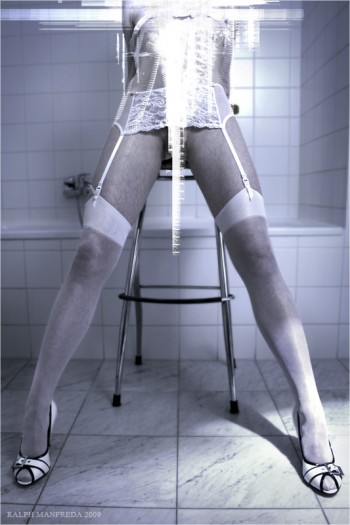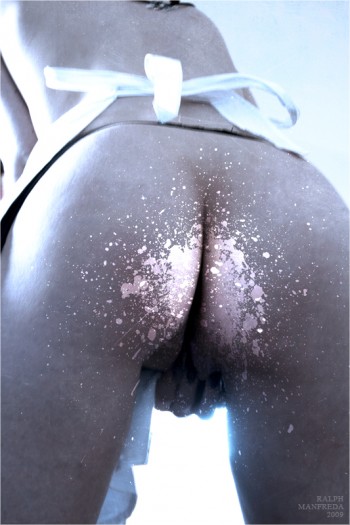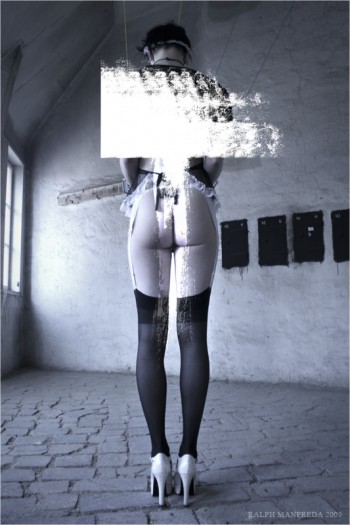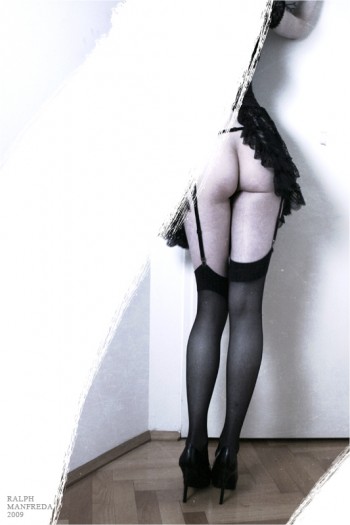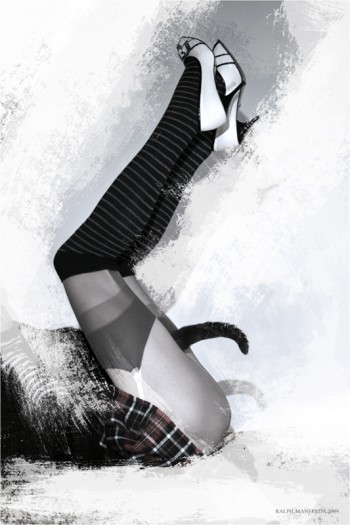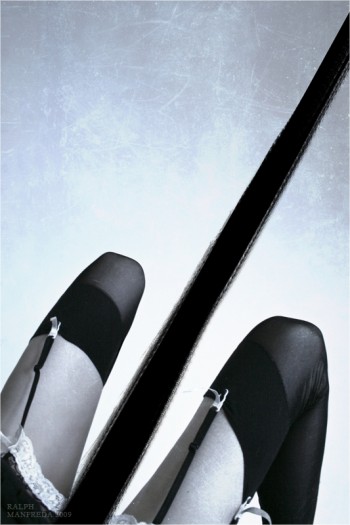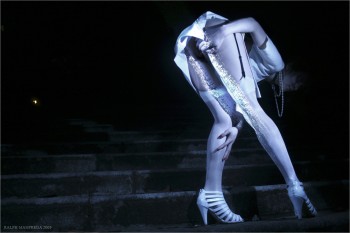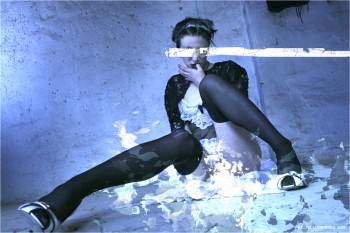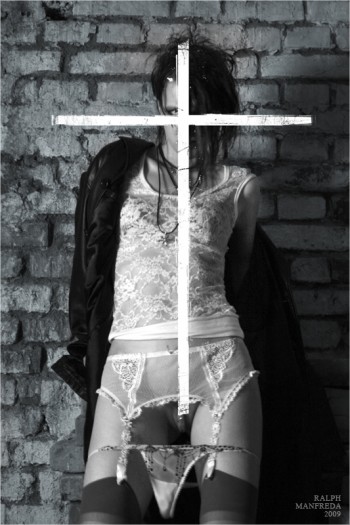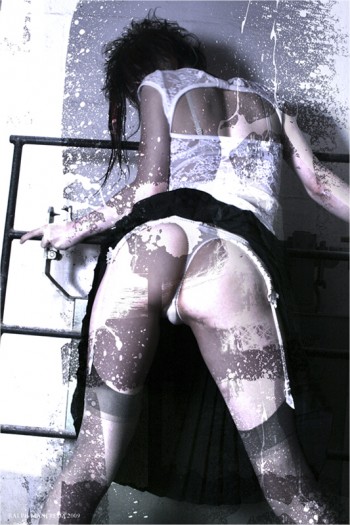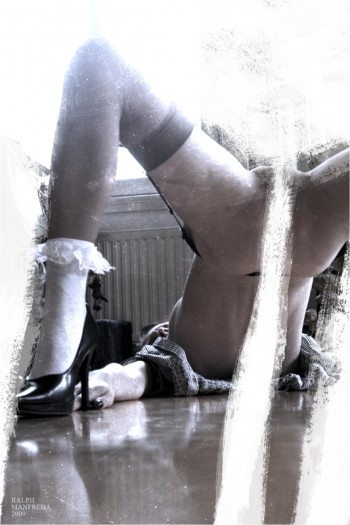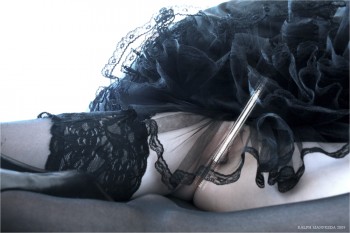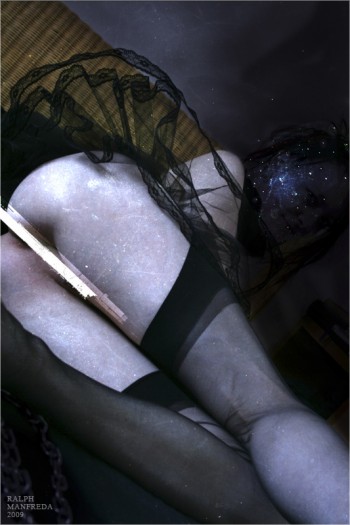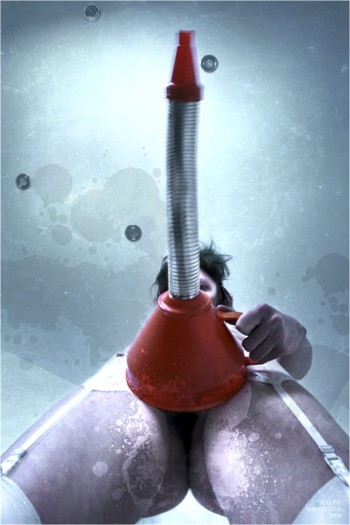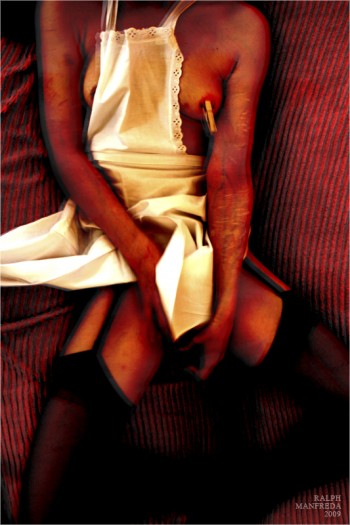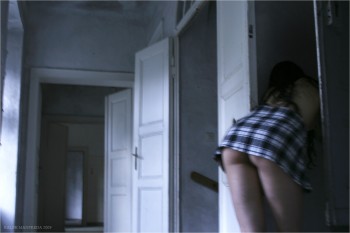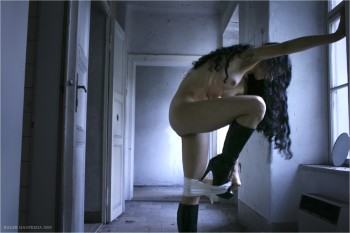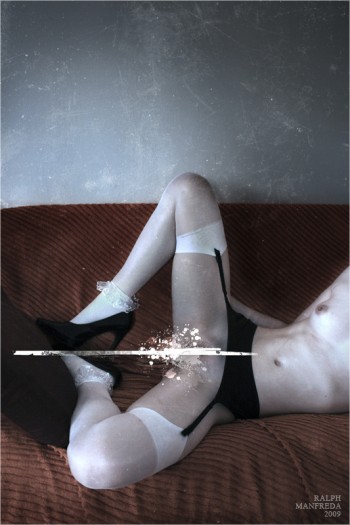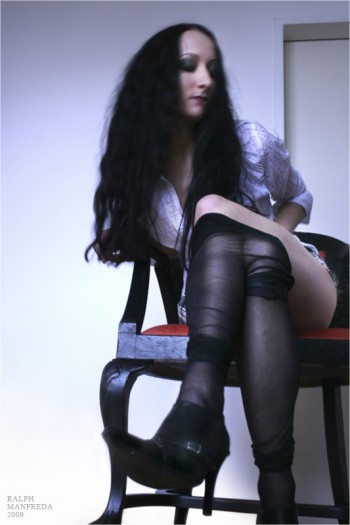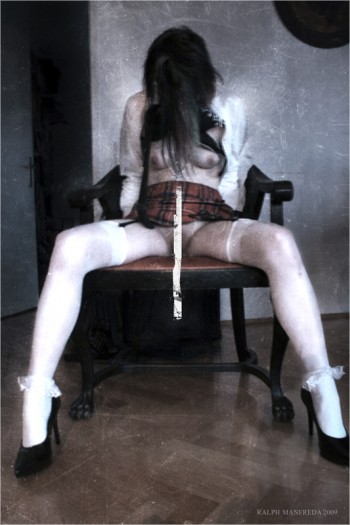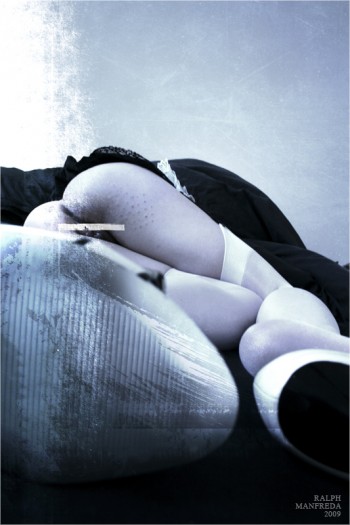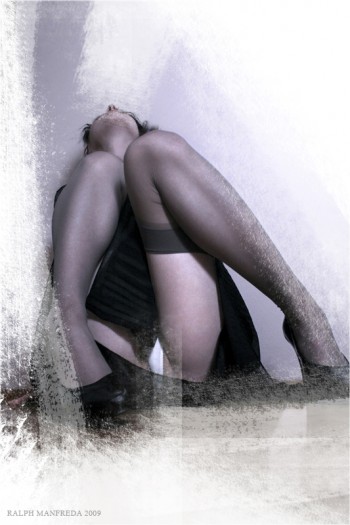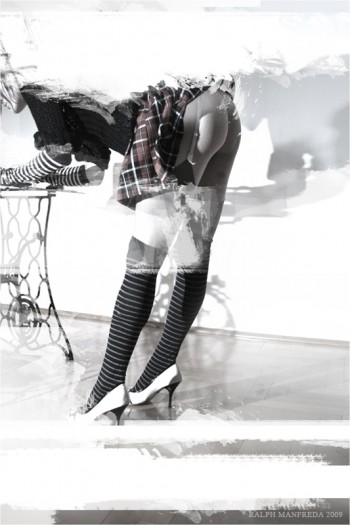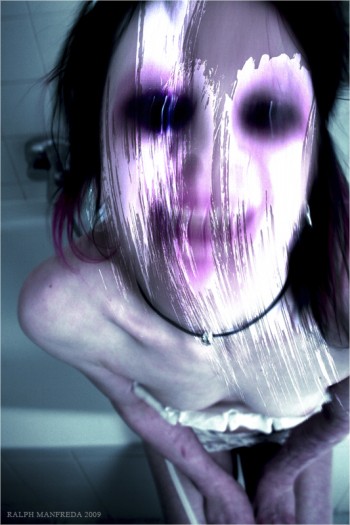Ralph Manfreda
Photographer, Designer
Ralph Manfreda (1964) is a Graphic-Designer and Magazine-Art-Director who lives and works in Vienna, Austria.
7 Questions an interview
with
Ralph Manfreda
When did you become interested in photography?
I don’t know when exactly I started to be interested in photography; maybe with 9 or 10 years of age.
At that time, one of my hobbies was visiting galleries. A lot of what I do is rooted in that time; but it definitely was my first earnest preoccupation with art.
Surreal paintings were able to serve my dream-like phantasy-constructions, back then as today; mentioned should be, due to puberty, the female body.
Until today I relish this ‘object’ as the most beautiful and arresting one; closely followed by crustacean and insectoid body forms.
To be more abstract: Every physical body emits energetically stronger or weaker ‘waves'; the human body in general and the female one in particular seems to possess an exceptionally strong ‘radiation intensity’.
Certain body parts activate the sensory areal of my brain particularly strong: Legs, knees or the shoulders’ area are visual stimuli to which I strongly respond (during the act of photography it often happens, that I forget to see the whole and concentrate my focus, without realising it, entirely onto the legs, until my inner corrector reminds me that I originally wanted to take an entirely different picture).
It is, curiously enough, part of my ‘special’ sensoric system that the more those parts of the body are hidden from direct view, are covered, the higher the build-up in tension resulting.
When the act of uncovering/discovering happens, the build-up stops and releases the energy which has been stored in my internal reservoir, resulting that this data-collector wants to be filled with information again – information that has been cleared in the moment of releasing tension.
The female body is a trigger of my visual awareness.
Back to your question:
I think that, before using technical auxiliary devices resp. a camera as an aid, I already had my personal ‘endocrinal camera’, with which I recorded pictures relevant to the topic we’re dealing with now: Mostly of female legs or the female silhouette as a whole, to verify those pictures and then assign the seen to an inner affinity-status.
Simply put: Slim body and slim legs: high affinity; slim legs in stockings: highest priority.
This fetish-like obsession includes an affectation for Frenchmaid-Dresses; you can view some examples on: ralphmanfreda.wordpress.com
I have been using the camera – the technological one – to capture such pictures for a few years now; the means seem to be different through the inclusion of technology, but the intented purpose is the same.
Do you have your own studio or are you working on location?
Most of my pictures evolve from spontaneous action; this is a very important aspect of my photography.
Assembling backgrounds for hours or complicated positioning of lighting would take away my creativity and phantasy; if you look closely, you’ll find no artificial, abstracted factitiousness.
My almost manical intention to be real and not to follow any recent trends – whether in music, fashion or art – plays a very important part. I don’t care for compliance with a certain style.
If I am unhappy with a photo, which is very often the case, I begin to play with it; I’m overhauling it, add things like brushes, scratches or graphical elements, until I have made an inner peace with the pictures.
Maybe it’s that what gives my pictures a distinctive style.
My photos are usually effigies of reality.
The camera is always close to capture that which is imbued with enough mental intensity in a given moment, or simply a short impression – for example a coincidental position of an arm, a little bit of the thigh through the shifting of a skirt; things like that can bring me to abruptly discontinue anything I did to capture the impression photographically.
I was never interested in making fashion-shoots myself, and never offered to do them either.
In my years long activity as art director for magazines I was present at a lot of covershootings, trust me – I know what I’m talking about: There are hair-stylists, make-up-artists, fashion-directors, several assistants and then the photographer and the model itself; a huge staff of people is being busy with making a photograph look as, excuse the remark, artificial as possible.
Of course I know that especially cover-shootings need placativity and reduction. That’s how marketing and advertising works.
There has been research about the psychological manipulation of our thought processes for decades.
We do not buy what we think is good for us, but we buy what marketing-psychologists and motive-analysts think that WE are good enough for.
That’s no secret and was already described by Vance Packard (‘The Hidden Persuaders?’) in the 1950s. Essentially, the result isn’t photography anymore, but the concern, to sell a product with a pretty face as good as possible.
Back to the question:
Programmatic shootings and special ideas are being photographed in my flat, which I partially turned into a studio. Photographs on location outside usually happen spontaneously: a coincidally suitable location, the right moment, and a few pictures have been taken that I could never have planned that way.
Do you have assistance or are you working alone?
Alone.
I capture spheric, intensive moments, any assistant would not be present exactly when needed, or would disturb the intimate expression of the model.
The make-up is done by the models themselves, sometimes I explain my own wishes and into which direction the make-up should go.
The clothes are basically organised by myself, but the models also have their own ideas concerning specific clothing or the accessoires for a shooting, which then prove to be inspiring on a mutual basis and often lead to completely new ideas/concepts during the shoot.
Because I don’t do fashion-photography, I don’t need anyone who knows the latest trend-fashion and gets i
Was it easy to find models when you started photographing nudes?
I don’t photograph nude.
What do you prefer: digital or analog?
Basically, analogue – but the functionality of digital can’t be denied.
I find it annoying in digital pictures that they are calculated in pixels rather than vectors, which means that they can’t be enlarged to infinity.
I like to think in big dimensions and would preferrably print out every photo with several meters in height; up to a certain scale, today’s digital cameras do their work, though.
Do you have other artist(s) who you admire and inspire you?
There is no special artist/photographer; to aspire to a role model would constrain and inhibit my creativity too much.
Of course one is always influenced by something, but when I see a beautiful picture, I don’t usually care who created it, but simply delect myself to the beauty.
I feel similarly about music: I listen to it via web-radio, but I am not interested into which band is playing.
What most inspires me is, for example, not seeing a picture as it should be whilst scrolling through websites. Often it’s small thumbnails, on which it is not easily discernible what it is, and I see something entirely different.
I also enjoy phantastic painting, but also old Dutch or Italian masters or portrait painting or religious art.
Within the realm of photography it is possibly Roy Stuart; I find his erotic art to be really good.
Many may know (or not) that I am also a Dark-Art-Painter (www.cryptonaut.com) and created covers for some famous bands from the metal scene (name-dropping: Naglfar, Belphegor, Pungent Stench, …).
Ernst Fuchs or H.R. Giger with their phantastic image-worlds were formative in that regard.
What is number one on your wishlist?
I want to be able to look back at the end of my life to a creation that I am personally more or less satisfied with, and leave marks that possess artistic validity.
I also want to add that I wish humanity would reach a grade of rationality and sanity that gives respect to nature, for example in the preservation of the oceans.
Also the progress in science, especially astro-physical insights and genetical technology/medicine.

